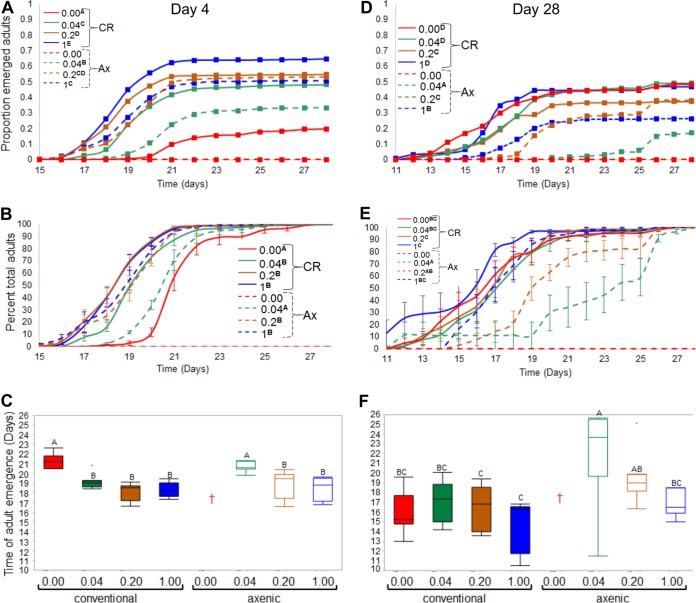FIG 3 .
Impact of dietary thiamine and microbiota on fly development. Development to adulthood was assayed for CR and Ax eggs raised on diets containing different concentrations of thiamine. For all plots, treatments designated with the same letter are not significantly different from one another. (A and D) Survival curves depicting the proportion of emerged adults from eggs laid at 4 and 28 days, respectively. Overall, CR flies survived better than their Ax counterparts on any thiamine diet, with comparisons shown in Table S2 (eggs laid on day 4) and Table S3 (eggs laid on day 28). (B and E) Time course for adult emergence from eggs laid by 4- and 28-day-old females, respectively. Each value shows the mean ± standard error of the mean (SEM) (error bar) of the proportion of the total adults that emerged in a given treatment. (C and F) Box plots representing the time of emergence of 50% of the total population of adults from the eggs laid at 4 days and 28 days, respectively (P < 0.0023 by t test). The red dagger indicates that no flies survived to adulthood. In panel C, adult emergence of CR flies raised on the no-thiamine diet and Ax flies raised on the 0.04-µg/ml thiamine diet were significantly delayed compared to all fly trials that produced adults (P < 0.0001). (F) For eggs from older females, axenic flies on the 0.04-µg/ml thiamine diet emerged later than the CR flies on all other diets (P < 0.0001).

